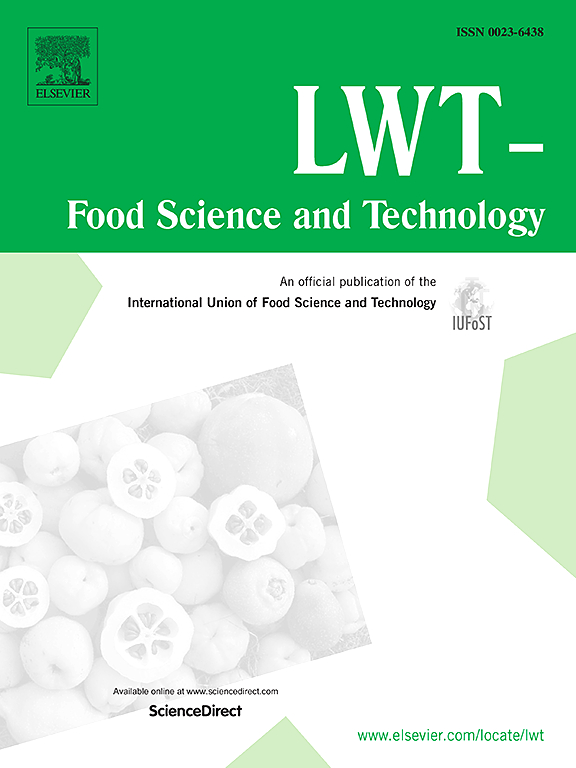Antimicrobial efficacy of chlorogenic acid against the mixture of Brochothrix thermosphacta and Pseudomonas lundensis and its application to vacuum-packaged chilled chicken
IF 6
1区 农林科学
Q1 FOOD SCIENCE & TECHNOLOGY
引用次数: 0
Abstract
The interaction between microorganisms is a major factor contributing to the deterioration of chilled chicken. Therefore, this study investigated the inhibitory mechanism of chlorogenic acid (CA) on Pseudomonas lundensis (PL) and Brochothrix thermosphacta (BT), and evaluated the preservative effect of CA treatment of chilled chickens inoculated with BT + PL in a vacuum-packed (3 °C–5 °C) condition. Results demonstrated that CA significantly inhibited the growth of BT and PL and disrupted their cell membrane. When 10 mg/mL CA was used to treat BT + PL for 10 min, the TVC of BT and PL decreased rapidly. CA was found to cause cell membrane damage and cell morphology deformation in BT and PL, as observed by scanning electron microscopy and confocal laser scanning microscopy. This finding was manifested by an increase in cell surface zeta potential, a decrease in intracellular ATP content, and an increase in extracellular alkaline phosphatase, protein, and K+ content. CA effectively prolonged the shelf life of vacuum-packed chilled chicken. These merits were evidenced by the reduction in polypeptide content and TVB-N and the decrease in volatile odors such as nitrogen oxides, and inorganic sulfides in chilled chicken. These findings show how CA may be used in meat products as an antibacterial agent.

求助全文
约1分钟内获得全文
求助全文
来源期刊

LWT - Food Science and Technology
工程技术-食品科技
CiteScore
11.80
自引率
6.70%
发文量
1724
审稿时长
65 days
期刊介绍:
LWT - Food Science and Technology is an international journal that publishes innovative papers in the fields of food chemistry, biochemistry, microbiology, technology and nutrition. The work described should be innovative either in the approach or in the methods used. The significance of the results either for the science community or for the food industry must also be specified. Contributions written in English are welcomed in the form of review articles, short reviews, research papers, and research notes. Papers featuring animal trials and cell cultures are outside the scope of the journal and will not be considered for publication.
 求助内容:
求助内容: 应助结果提醒方式:
应助结果提醒方式:


